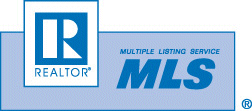1
The key to finding the right place is to be aware that this equation always works:
 Location + Size + Condition + (a little bit) style and charm = Price
Location + Size + Condition + (a little bit) style and charm = Price
Location is there forever! Size is expensive to change — and may be impossible. Condition will change — whether you want it to or not. Charm is in the eye of the beholder.
A smart buyer chooses location or locations first. Check your commute, your walking routes, your regular shopping routine, night safety and quiet. If you have flexibility in your locations, you will have more choices. I am not saying that you must move far away or into a bad neighborhood; rather, I’m encouraging you to find neighborhoods that work for you by trying them out.
Once you know the area or areas you like, then you can more comfortably balance the questions of size and condition. A home in the “best” location may be too small or too run down for you. Sometimes another good — but not great — location will afford you more space or a better condition.
 Location impairment
Location impairment
Some houses only sell in seller’s markets. That is when buyers are willing to do their deepest compromises. (Buyers who are considering entering the market need to know that we are still in a seller’s market.)
When buyers get desperate, they look at seriously location-impaired houses. I am talking really impaired! Stuff like a house under the highway entrance ramp, facing a multi-lane highway, on a busy street next to a gas station, on busy street next to an abandoned gas station, built into a rock – with no yard.
Houses with this kind of unchangeable problem are tougher to sell in any market. In a true buyer’s market, they are nearly impossible to sell. There is a point where no price reduction is deep enough, if demand is not unusually high for the town or general region.
In the seller’s market of the last couple of years, some houses that are location-impaired have been priced low enough to attract a buyer. From where I sit, as a buyer’s agent, buyers who choose houses in bad locations own houses that will always be wrong for the vast majority of possible future buyers.
Locations and micro-locations
 The old saw “the only thing that matters in real estate is location, location, location” is frequently misunderstood. What it really means is that location has three levels: first by metro area, second by town or clusters of towns, and third, in a very local sense.
The old saw “the only thing that matters in real estate is location, location, location” is frequently misunderstood. What it really means is that location has three levels: first by metro area, second by town or clusters of towns, and third, in a very local sense.
I work in the Boston metro area and mostly in the towns immediately outside Boston proper. This is a “good” location. Most of the towns that I work in are also considered “good” locations (although some are better, and more expensive, than others).
In my practice, I spend a lot of time talking about location in the very local sense. Let’s call that “micro-location.”
What makes a bad micro-location? Mostly, it is a condition that offends the senses of the typical buyer. Here are some examples:
Sight: a permanent structure which is ugly (like a warehouse) or blocks the light (like a wall of rock in the back yard a few feet from the foundation). Sometimes a house too close can be enough to damn the house for sale in places where most houses have visual privacy.
Smell: a permanent structure that emits an odor or could cause significant, smelly pollution. Gas stations and fast-food restaurants are obvious examples. Also, consider busy streets leave a petrochemical smell. Some streams also smell, in season.
Sound: a business which has delivery early in the morning can create sound pollution each morning. Schools have bus traffic, as well as delivery. Also, people who work at home don’t all love the sound of children at play, nor are the bells announcing class a pleasure all day, every day. Of course, road noise is one that most buyers know to look out for; be sure to check that noise in the back yard, where it could be better or worse.
Touch: a business that has heavy trucking or other heavy machinery can make a house vibrate. Very annoying. The business often is ugly, too, but may be hiding behind bushes.
Taste: well, not really… Houses with “bad taste” are not necessarily locationally impaired.
Using electronic search
Now that anyone can get house listings on their home computer, my job as a buyer’s agent has changed. I no longer provide the house listings. I provide advice on how to handle the house search on the computer. (I started working in real estate in the Stone Age — well, actually, it was the Paper Age.)
The most common mistake that consumers make when setting up an MLS search is to limit their search too much or too little. The ideal search yields properties that are closer and closer to the goal. Bad searches yield either too few options or properties that don’t work, in the same way, over and over.
Setting up your search takes some thought. Start with deciding what your search is, according to the equation we already mentioned: Location + Size + Condition + (a little bit) style and charm = Price.
- First, decide on the location or locations that you want. This may be a town or a group of towns. It may also be within a certain distance from work, or from a T stop, or from you church, or from someplace else you regularly go.
- Second, decide on your absolute smallest property you would consider. Since square footage on listing sheets are inconsistent, subtract about 100 SF from what you think you need, for starters. Change it once you establish that they are consistently too small at the bottom of the scale.
- You can’t search for “good condition,” but you can search for age of the property or key words that would yield renovated houses. Hint: keyword “kitchen” will find renovated kitchens. Listing agents do not advertise “old kitchen” in the remarks.
Your search does not need to be consistent. It is not unreasonable to have several searches running to pick up several locations that might work, with different top prices, based on desirability. Some house-hunters search for condos in one town and houses in another.
The joy of computer searching is that it costs nothing, but time and concentration, to set up a search that yields good options for you. Work with your agent to set up an intelligent search. Let your fingers do the walking, as they said in the Paper Age.
What does that MLS abbreviation mean?
 Here’s a quick primer on how to read Multiple Listing Service (MLS) and alternate real estate listing sites.
Here’s a quick primer on how to read Multiple Listing Service (MLS) and alternate real estate listing sites.
Most of my clients “web around” to sites like Trullia and Zillow to look at images of properties for sale. My office creates customized searches with our database, but the raw data is out there for everyone now.
This list will help you read the data and understand why some property disappears and sometimes reappears on the lists. Here is the way it is supposed to work:
Properties for sale that buyers can see and make offers on:
ACT means active.
New means just listed. (These include properties that were listed before under a different MLS number.)
PCG means price change.
Properties marked BOM have come back on the market after the active marketing has been suspended. Sometimes, I see this marked as RAC, which means reactivated.
Properties that buyers can see, but are already spoken for:
Properties that have ACT in red have an Offer accepted, but there are still contingencies. Some sellers want to show their houses right up to closing day, in case something goes wrong.
Properties that have ACT with a little clock icon have an Offer accepted, but there are still contingencies with a specific deadline. Some sellers want to show their houses right up to closing day, in case something goes wrong.
Properties that have CTG have an Offer accepted, but there are still contingencies that are not completed. This may be an inspection, a Purchase and Sales Agreement, and/or the mortgage commitment. Some sellers want to show their houses right up to closing day, in case something goes wrong.
Properties that are no longer for sale, but are found on some lists:
Properties that read UAG are under sales agreement and not actively being marketed. In most interfaces, they disappear from view.
Properties that have the designation CAN have a cancelled contract between the agent and the owner before the contract period ended. Those that read EXP had the listing contract expire. The seller may have chosen not to sell. Watch for this house to come back on the market with the same agent or different one. Look for the house again as a “for-sale-by-owner” or in MLS, marked BOM or RAC or NEW.
Properties that have WDN are withdrawn from the market. This could mean the seller needs a week off from showing it, or a month. However, the agent is still under contract with the seller. These may come back as BOM or RAC or NEW.
Properties that were never for sale:
Some of public real estate sites have lists of places that are “pre-foreclosure.” Because of the way these lists are compiled, many of these houses are not for sale and will not be for sale. When you do your searches, you will find out which sites are reliable. Some are just not worth your time.
